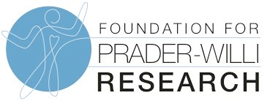 In contrast to many rare diseases that can be traced to a single gene, PWS involves a region of DNA that encompasses numerous genes. A lot of PWS research is centered around trying to connect the dots between the genes in the PWS region and the actual symptoms of PWS.
In contrast to many rare diseases that can be traced to a single gene, PWS involves a region of DNA that encompasses numerous genes. A lot of PWS research is centered around trying to connect the dots between the genes in the PWS region and the actual symptoms of PWS.
Having a roadmap like this would then allow for a more targeted approach to developing therapies that address the cause of hyperphagia or other areas of highest priority.
Dr. Giles Yeo at the University of Cambridge is specifically working on SNORD116. It is well established that the deletion of SNORD116 is a strong contributor to PWS in humans. However, mice born without Snord116 don’t display hyperphagia (excessive eating) and obesity. This discrepancy makes it very difficult to study the biology of SNORD116, and to use this model of PWS to test anti-obesity drugs.
In a major breakthrough, Dr. Yeo’s group has shown if the timing of SNORD116 deletion is shifted until after the mice reach adulthood, a percentage of them display the hallmark PWS features of obesity and hyperphagia. Studying this novel model in detail will help us understand the function of SNORD116 and the role its absence plays in PWS. It also provides a new model for testing drugs to curb hyperphagia and obesity in PWS.
More information on this exciting work "Recapitulating obesity and hyperphagia in novel adult-onset mouse models of Snord116 deletion" and others can be found under FPWR's funded projects.








